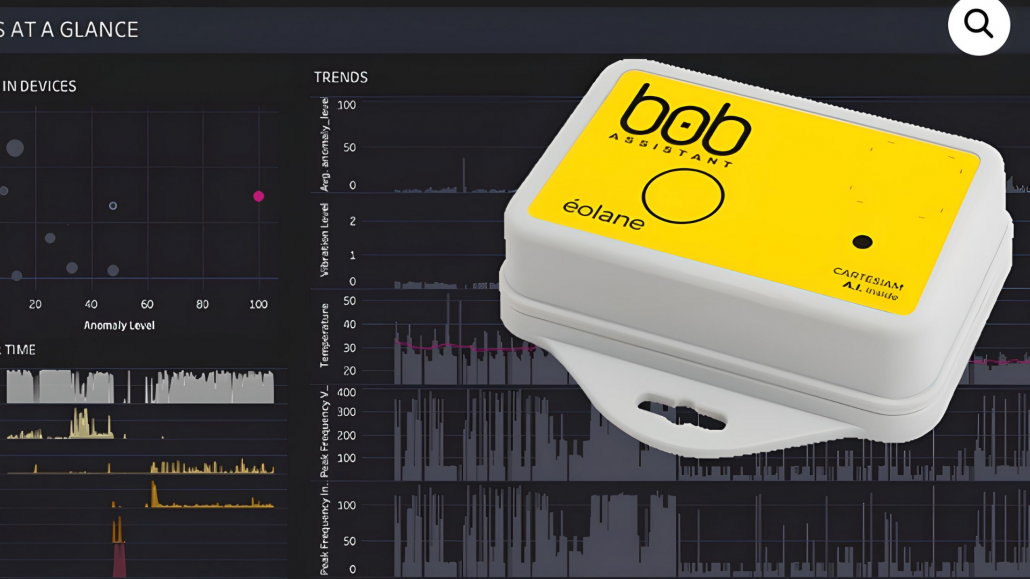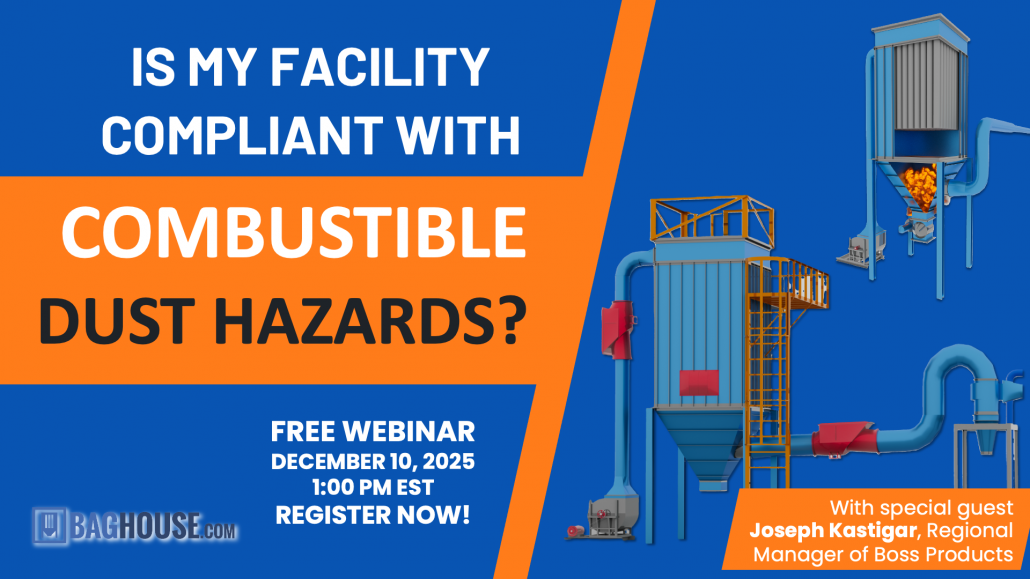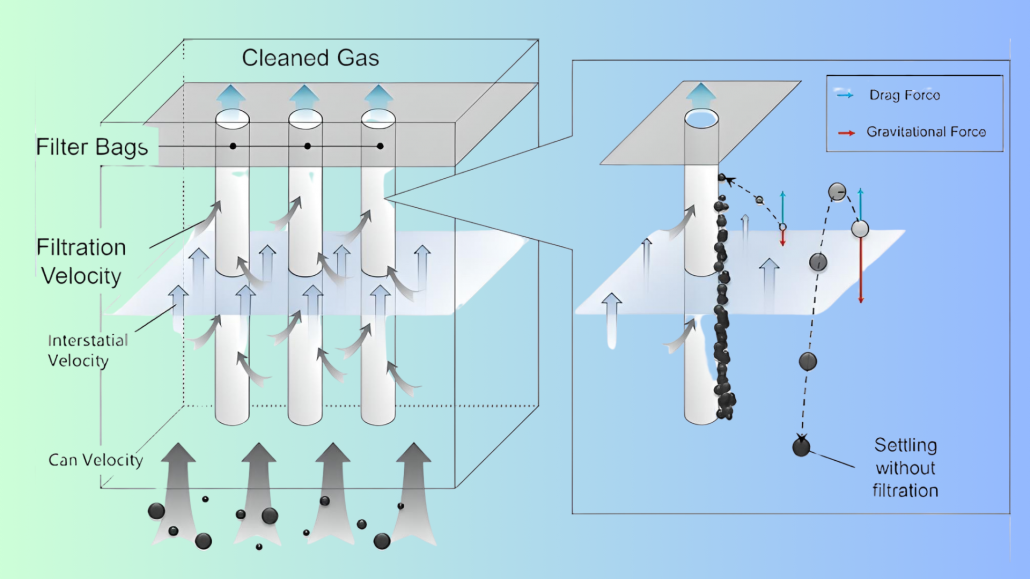What is a Secondary Dust Source?
Even the best-designed dust collection system has its limits. While it captures emissions at their source, it can’t always handle secondary dust created by leaks, material spills, poor housekeeping, or even dust brought in through open doors, windows, or the ventilation system. These “hidden” sources often make the difference between a system that works and one that feels ineffective.

Dust levels inside a facility can spike for reasons that don’t always point to the collector. Common culprits include:
- ❌ Inadequate maintenance of dust collection equipment or dust-generating processes
- ❌ Poor housekeeping practices
- ❌ Recirculating air that still contains dust particles
- ❌ Emissions from dust collectors that aren’t properly controlled
Of course, all of this assumes that major sources of dust are already equipped with the right collection systems. The focus here is on the secondary factors that can make or break system performance.
Administrative Measures That Make a Difference

Many plants benefit from creating a dedicated dust control task force that includes plant managers, safety managers, and production leads.
Sometimes the best improvements aren’t mechanical but managerial. Establishing a dust control policy backed by leadership sets the tone. Many plants benefit from creating a dedicated dust control task force that includes plant managers, safety managers, and production leads. This group’s role is to survey the facility, set priorities, assign solutions, track progress, and estimate costs.
Education is another powerful tool. A short training program goes a long way in helping employees understand company policies, government standards, reasons for dust surveys, and their own role in reducing exposure. Workers who know why dust control matters are far more likely to support and maintain it.
Managers can adjust work schedules to limit dust exposure, reschedule high-dust activities like hopper emptying to off-hours, and ensure respirators are accessible and used correctly can make a big difference.
Periodic Dust Housekeeping Checklist
✅ All mobile equipment (trucks, front-end loaders, dozers, etc.) clean.
✅ Motors and switch gear clean of excessive dust, oil, slurry, and debris.
✅ All operating department floors and working surfaces to be vacuumed or washed and free of scrap or debris.
✅ Tools, bars, shovels, etc. stored in racks.
✅ Hoses washed down on reel installed and maintained at such points as slurry pumps, stone belt transfer points, etc.
✅ Safety shower operational, available, and clean.
✅ Safety eyewash bottle, first-air kit, and stretcher checked.
✅ Dust accumulations around process equipment at a minimum; spills promptly cleaned up.
✅ Fire extinguishers checked and available.
✅ Belt-conveying systems free of spills and buildup, particularly at transfer and loading points.
✅ Building siding and roofs properly maintained and free from broken or loose sheets.
✅ Building doors and windows clean and in good repair at all times.
✅ Locker rooms neat, clean, and in sanitary condition.
✅ Offices neat and orderly.
✅ Bulletin boards available and properly maintained.
✅ Unpaved roadways and parking areas treated to minimize dust.
✅ Yards and fields mowed frequently.
✅ Plant storm sewers and open drainage ditches clean.
✅ Parts inventory stored in orderly fashion.
✅ Traffic lanes in shop areas clearly marked and free of scrap.
✅ Abandoned process equipment and machinery promptly removed from the plant.
Preventive Maintenance Programs
Preventive maintenance (PM) programs often pay for themselves many times over. Scheduling regular inspections and keeping spare parts on hand can reduce breakdowns and avoid costly interruptions.
- ☑️ Conduct PM programs on all dust control system hardware and components, as well as dust-producing sources, during plant shutdowns or as recommended by the equipment manufacturer.
- ☑️ Carry all necessary spare parts in sufficient quantities for dust control systems.
- ☑️ Give high priority to patching holes, caulking and sealing cracks, and maintaining dust seals.
- ☑️ Inspect and adjust all belt conveyors and their skirting rubber and dust seals.
- ☑️ Inspect belt conveyor idlers and non-moving idlers. Remove and replace missing or broken idlers.
- ☑️ Inspect all belt conveyor training idlers. Adjust them as necessary so the conveyor belt does not travel laterally.
- ☑️ Shut and clamp all access and inspection doors before any operation begins. Schedule adequate time for workers to perform routine cleanup at work stations.
- ☑️ Rotate periodic cleanup among crews.
- ☑️ Inspect all dust seals and repair or replace.
- ☑️ Inspect belt scrapers on belt conveyors and adjust. Replace worn-out components.
- ☑️ Measure velocity and static pressures weekly.
- ☑️ Check for plugged ductwork and clean it immediately. If this problem occurs repeatedly, redesign the ductwork.
- ☑️ Develop safeguards to prevent overflowing bins.
- ☑️ Follow the preventive maintenance program for dust collectors, fans, and motors.
- ☑️ Inspect nozzles and other components periodically. Replace worn-out nozzles as needed.
Read article: 3 Baghouse Maintenance Tasks for Your Next Shutdown/Outage
Operating Procedures That Protect Workers
Even the best equipment won’t perform if it’s not operated properly. Operators should know that dust control systems must be running before production begins. Compressed air shouldn’t be used to clean dust off clothing or equipment… it just puts the dust back into the air. Instead, use vacuum systems or water spray during shutdowns.
Other simple practices include slowing down conveyors to reduce dust circulation, installing alarms to alert staff when collectors shut down, and removing obsolete equipment that serves as a dust trap.
Don’t Forget Outside Sources
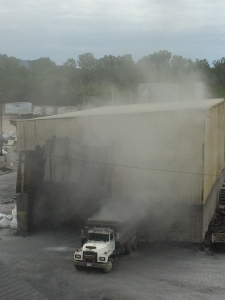
Haul roads, loading and unloading areas, and stockpiles are major contributors to secondary dust.
Haul roads, loading and unloading areas, and stockpiles are major contributors to secondary dust. Even if they’re outside the building, dust can blow or be pulled in through air intakes, doors, and windows. Treating or paving roads, spraying active stockpiles, and enclosing loadout areas with their own dust controls all help. Positioning air intakes to minimize exposure and using automatic bin level indicators to prevent overflows are additional ways to keep outdoor dust from becoming an indoor problem.
Recirculation: Handle With Care
Recirculating air from dust collectors can save heating costs (especially in colder climates), but it comes with risks. If not properly designed and maintained, the system can send dust right back into the workplace. Negative pressure from poor make-up air planning can also pull in outside contaminants or create drafts that affect both workers and equipment.
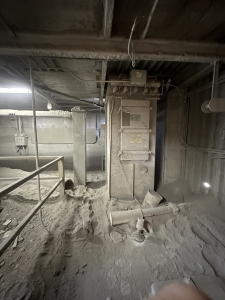
Secondary sources—whether from poor housekeeping, neglected maintenance, or outdoor dust blowing inside—can overwhelm even the best systems.
If a facility does recirculate, safeguards are essential: a secondary air-cleaning system, fail-safe monitoring devices, warning alarms, and emergency bypasses to the outdoors. Cleaned air should be distributed carefully to prevent local “mini dust storms.” For hazardous dusts with low exposure limits, recirculation is generally not recommended.
Secondary sources, whether from poor housekeeping, neglected maintenance, or outdoor dust blowing inside, can overwhelm even the best systems. For plant managers, operations leaders, and EHS personnel, the real key is consistency: when dust control becomes part of everyday operations, the result is a safer, cleaner, and more efficient workplace.


